Visit: 24th October 2016
Following a weekend in which we had together visited two American World Heritage Sites – the Statue of Liberty in New York and Independence Hall in Philadelphia – it was Monday and Jeffrey had to return to his day job. I, on the other hand, had 4 days left in the USA, so I had arranged for myself an excursion a little further afield. From Jeff’s house in Brooklyn I travelled to New York’s domestic-only La Guardia airport to catch an American Eagle flight 300 miles southwest to the city of Charlottesville, Virginia.
Despite being home to the CFA Institute (awarding body for the Chartered Financial Analyst designation), Charlottesville is best known as the hometown of Thomas Jefferson. A polymath, Jefferson’s three proudest achievements were drafting the American Declaration of Independence, authoring the Virginia Statue of Religious Freedom, and founding the University of Virginia. We know that because he put them on his tombstone. But he achieved even more than that, having served as ambassador to France, Secretary of State, Vice President and then President of the United States. He was a key author of the US Constitution, but also a linguist, an inventor and an architect. It is chiefly for his achievements in that final role that UNESCO inscribed Monticello and the University of Virginia as a World Heritage Site in 1987.
Like Independence Hall, Monticello is immortalised on American currency. Not the illustrious $100 bill for this site, but the humble nickel.
Jefferson (1743-1826) was a scholar of Andrea Palladio, the 16th century Venetian architect who gave his name to the style known as Palladianism. Emphasising symmetry, it drew self-consciously on the styles of Classical Athens and Rome. Jefferson was instrumental in bringing the style to the Americas, building himself a home at Monticello to showcase the grandeur the style could bring.
Located a few miles outside of Charlottesville, Monticello – which is Italian for ‘little mountain’ – was built upon the top of a hill that Jefferson had his workers (slaves) carve the peak off to create a plateau. Looking at the house we can see the inspiration for Washington, D.C.’s whole architectural style.
I took a tour of the house, where I walked once again in the footsteps of Kenneth Clark. Here is the bed that Jefferson designed so that he could get out into either his library or his study depending on his mood. Unfortunately I wasn’t allowed to try on Jefferson’s glasses as Clark did!
There is a nearby hill that rises higher than Monticello, meaning whoever occupies it would have a great view of Jefferson’s estate. In recent years a developer announced plans to build condos there, but the trustees of Monticello – determined to prevent the surrounding area being despoiled – raised $15 million to buy the land themselves. By happy coincidence, $15 million is exactly the same amount that Jefferson as president paid Napoleon’s France in 1803 to purchase all the lands west of the Mississippi, doubling the size of his country at the stroke of a pen. And a significantly better deal per acre than the Monticello trustees received for one small hilltop.
After having settled into the completed house at Monticello and finished his time as president, Jefferson oversaw the construction of his main local legacy, the University of Virginia. As a proud southerner he was alarmed at the way northeastern universities like Harvard and Yale sucked up the brightest young minds from the southern states. He was a passionate supporter of ‘states rights’, no opponent of slavery and generally of the mindset that would lead the next generation of southerners into civil war with the north. In order to limit the the anti-southern propaganda that he believed the established universities were spreading, he thought it necessary to found a university right there in Charlottesville. As I walked around the campus in the early autumn evening it seemed like a wonderful place for students to study, and you can clearly see the similarity of style with Monticello, just up the hill a couple of miles away.
Jefferson designed the Rotunda at the University to demonstrate the “authority of nature and power of reason”. Inspired by the Pantheon in Rome its position as a secular building at the heart of a university campus stood it in stark contrast to the universities of Europe, all with churches at their centres.
Given that this was my first time in the American South (although admittedly only just within it!) I couldn’t leave without seeking out some soul food. Fortunately there is at least one place serving such fare in Charlottesville, named Mel’s Cafe. I had fried chicken, fried potatoes and ‘slaw followed by a sweet potato pie for dessert, washed down by a styrofoam cup of iced tea. This delicious meal was had for about $12, making it the cheapest meal of the trip and good value for money. With Wheel of Fortune being shown on NBC, this felt like the first time I had set foot in ‘real America’ on this trip.
When my time in Virginia was up I boarded the flight back to New York, from which I was got a great view of Manhattan on the approach to La Guardia. Just a few nights later an aircraft carrying Vice-Presidential candidate Mike Pence skidded off the runway there.
Speaking of politics, during the final two days I spent in New York one of the places I visited was Trump Tower. This was before the election shock, and – although I had £20 on his winning at odds of 7/5 – it was looking unlikely that he would pull it off. I was amused to see ‘women for Trump’ activists demonstrating outside the entrance and surprised to see a sign saying ‘public welcome on floors 1-5’. Tempted as I was by the shirt-and-gold-tie combination, I was unable to locate the TRUMP STORE in order to purchase it.
Which brings me to the end of my three US World Heritage Site posts.
I wonder what America’s 3rd president would have made of its 45th?
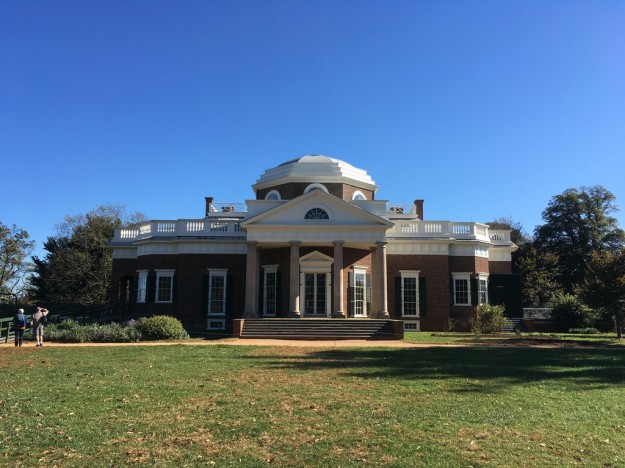
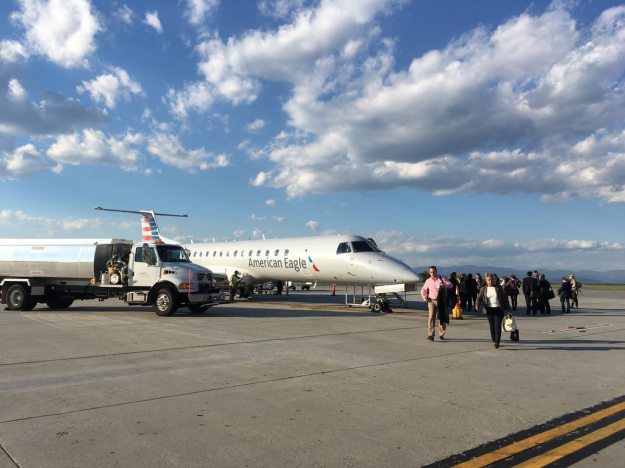
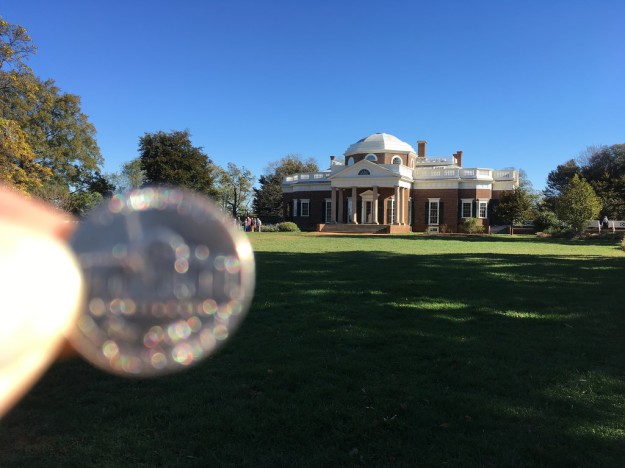
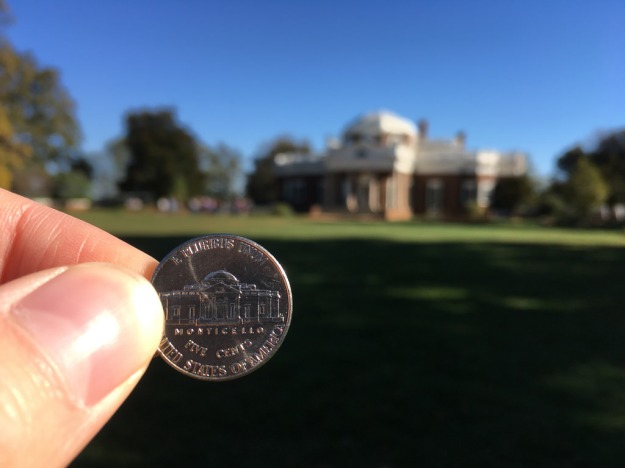
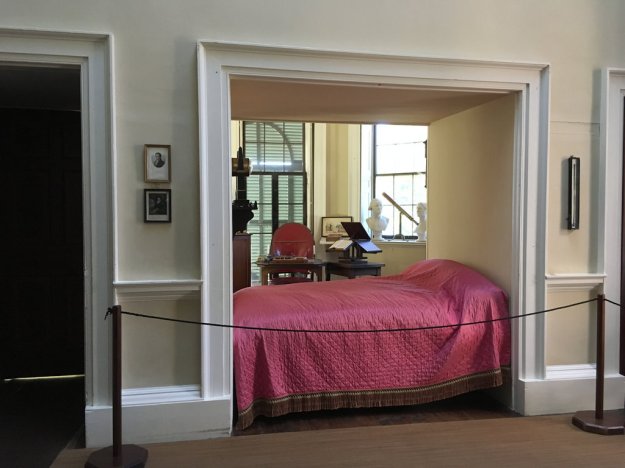
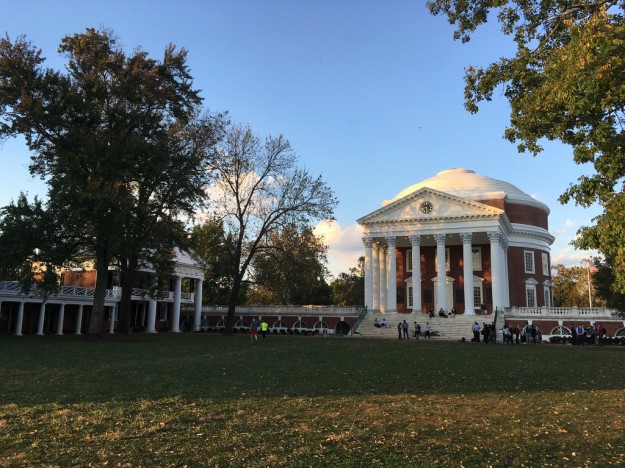











Pingback: • Historic Centre of Rome, the Properties of the Holy See in that City Enjoying Extraterritorial Rights and San Paolo Fuori le Mura | Tom's World Heritage Site travel blog
Pingback: • The Climats, terroirs of Burgundy | Tom's World Heritage Site travel blog